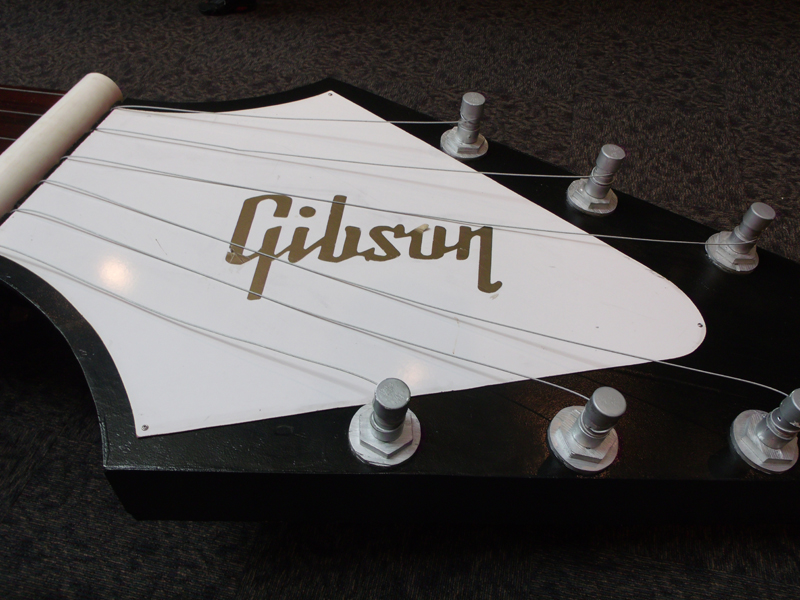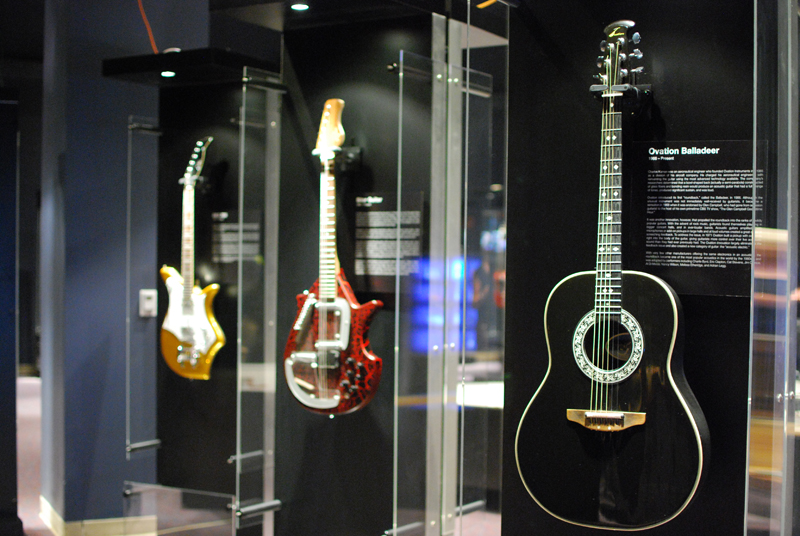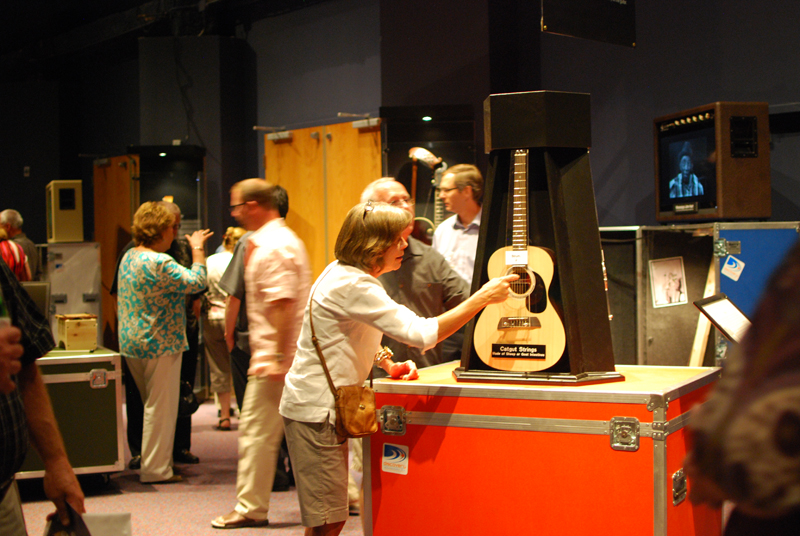Traveling Guitar Exhibit Foreshadows Permanent Home of National Guitar Museum

You'd be hard pressed to find a guitarist who wouldn't consider the guitar, by its very nature, to be a work of art.
The colors, the shapes, the wood and all those little idiosyncrasies make each guitar While many manufacturers have created showcases of their instruments in specific museums, there has yet to be one singular museum in the United States to focus on the guitar word as a whole.
The National Guitar Museum aims to be the first permanent guitar-centric museum. The museum is currently touring the US with a traveling exhibit, which has just opened at the Carnegie Science Center in Pittsburgh, Pennsylvania.
We recently spoke to HP Newquist, executive director of the National Guitar Museum, about the traveling exhibit.
GUITAR WORLD: Can you give us an idea of what is going on at the Carnegie Science Center in Pittsburgh now through September 30?
We've got our traveling exhibit, "Guitar: The Instrument That Rocked the World," appearing at the Carnegie. The traveling exhibit is a foreshadowing of the museum we are in the process of building, which will be the first permanent museum dedicated to the history of the guitar.
The guitar is the world’s most popular instrument, yet there is no general-purpose museum dedicated to it. There are tea cup museums and ventriloquist dummy museums, but outside of Martin’s and Fender’s museums, there is no museum that looks at the whole world of guitar. That is what we are doing with our museum, and we’re beginning by showing big sections of that in places like the Carnegie Science Center.
All the latest guitar news, interviews, lessons, reviews, deals and more, direct to your inbox!
How long have you guys been working on this traveling exhibit?
The idea for the initial museum came about in 2008, but with the recession we decided not to build a permanent home right away. We decided to take a good chunk of the collection, about 70 guitars, and put it on the road. In the process we thought that since we were going to all these cities, we might find a good location for the permanent guitar museum. We’ve been on the road now for a year.
What can someone expect to find when they come to visit the exhibit?
When people come, especially people interested in the guitar, they will find pretty much an extended history of the instrument. The guitar itself as it exists today as a six-string evolves from instruments that date back 5,000 years. We’ve commissioned versions of some of those older instruments to show how the evolution occurred. We have instruments from northern Africa and the Middle East that developed the strings, the tuning pegs, the necks and the bowl-shaped body.
We then bring it forward through off-shoots of those instruments. You get everything from the sitar to the mandolin and the banjo. Then in the late-1400s you get into the first instruments that take on the shape of guitar as we know it, the hourglass-curved sides.
The problem with instruments made of wood, cords or animal skins is that they deteriorate and go away. We have had replicas made of many of them. By the time we get into the 1800s, we have instruments that have been preserved. We have a Martin 1835 Parlor guitar on loan from Martin. We move rather rapidly through the genius of the guitar in the modern era into Martins and Gibsons into the mid 1900s with the electric guitar.
Are there guitars people can play or are these more to be viewed?
In the case of all of these instruments and because they have historical value, most of those are under glass. We have a Rickenbacker A22 Frying Pan from 1934. All of those are in private collections or have disappeared off the face of the earth. To us, seeing it for real is pretty cool. We have to protect them. We have a lot of interactive exhibits with touch screens and such. We have the world’s largest guitar at 43.5 feet long. It’s a Gibson Flying V built by a science academy in Houston, Texas.
The exhibit is running through September 30 at the Carnegie Science Center in Pittsburgh. Admission to the exhibit is included with regular admission. The Carnegie Science Center offers a wealth of activities for children and adults. The exhibit will move to Richmond, Virginia, in October. Keep up with the exhibit through the links below.
Keep up with the exhibit through the links below:
carnegiesciencecenter.org/exhibits/guitar










